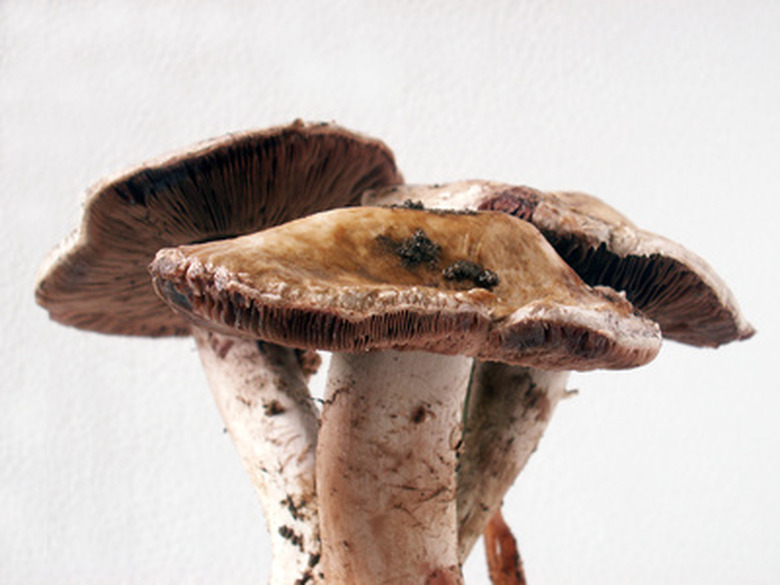California Wild Mushrooms Identification
Wild mushrooms offer an earthy, rich taste that is wonderful cooked and raw. Mushroom hunting is a fruitful recreation activity and numerous varieties can be found in California countrysides and forests. County mycological associations can help with search maps and harvesting regulations. Wild mushrooms should never be eaten without a positive identification. Field guide books and research as well as a knowledgeable guide will keep you from becoming poisoned by toxic wild fungi.
California Department of Health
The California Department of Health or CDH issued a warning in 2009 regarding the safety of wild mushrooms as an edible. The department cited numerous illnesses, hospitalizations and deaths caused by improper identification and ingestion of wild mushrooms. Of these, 499 were incidents where children ate a cap found in the backyard. Over 350 were treated at a hospital or health care facility, and one death resulted that year from a misidentified mushroom. Mushroom hunting and identification should only be undertaken with expert guidance.
- Wild mushrooms offer an earthy, rich taste that is wonderful cooked and raw.
- Of these, 499 were incidents where children ate a cap found in the backyard.
The Ring and Cup
Many mushrooms carry a ring at the top of the stem where it joins the cap. The ring is a ridge of flesh that extends around the stem. It is also called the annulus and not all mushrooms have them. It is easy to see and can be one of the first clues as to what type of mushroom you have found. The cup is what the mushroom stem rises from at the soil level. You will probably have to excavate a bit to see if your mushroom comes from a cap. It is also called the volva and the presence of both a ring and cap is a warning sign. These two features arise in the most deadly genus of mushrooms, the Amanita.
- Many mushrooms carry a ring at the top of the stem where it joins the cap.
- It is also called the volva and the presence of both a ring and cap is a warning sign.
Gills, Pores and Stems
All the parts of a mushroom can help you in identifying it. The gills are the feathery membranes on the underside of the cap. Mushrooms that do not have gills have obvious pores in the cap. These would include the Boletus species, which is a superior eating mushroom. If there are gills and you cut across them with a knife and liquid oozes out, it is a potentially toxic variety containing latex. The stem is another important clue. Stemless mushrooms such as puffball and bears head are excellent for eating, however you still need to cross reference all other features as there are stemless mushrooms that are toxic.
- All the parts of a mushroom can help you in identifying it.
- Stemless mushrooms such as puffball and bears head are excellent for eating, however you still need to cross reference all other features as there are stemless mushrooms that are toxic.
Color and Pigmentation
Mushrooms come in a variety of hues. Blue caps are a psychedelic mushroom and are easily recognizable. Chanterelles are delicately fluted and either golden or black. There may be mottling or speckles on the surface of the cap or on the stem that can enhance your ability to identify the fungus. Consulting the field guide book will enable you to quickly separate friend from foe by color.
The World's Most Dangerous Mushroom
The deathcap mushroom is in the genus Amanita. It is an innocuous looking fungus, but its poison is deadly. It is found from mid-autumn to late winter and can be seen growing in many locations, especially the San Francisco Bay area. It grows under live oak and cork trees and is single-handedly responsible for the majority of fatal mushroom poisonings. The cap is 2 1/2 to 6 inches wide, pore-less and greenish yellow. The gills are white and it has a thin white veil over it. Discoveries of this mushroom should be reported and the crops destroyed.
- Mushrooms come in a variety of hues.
- There may be mottling or speckles on the surface of the cap or on the stem that can enhance your ability to identify the fungus.
